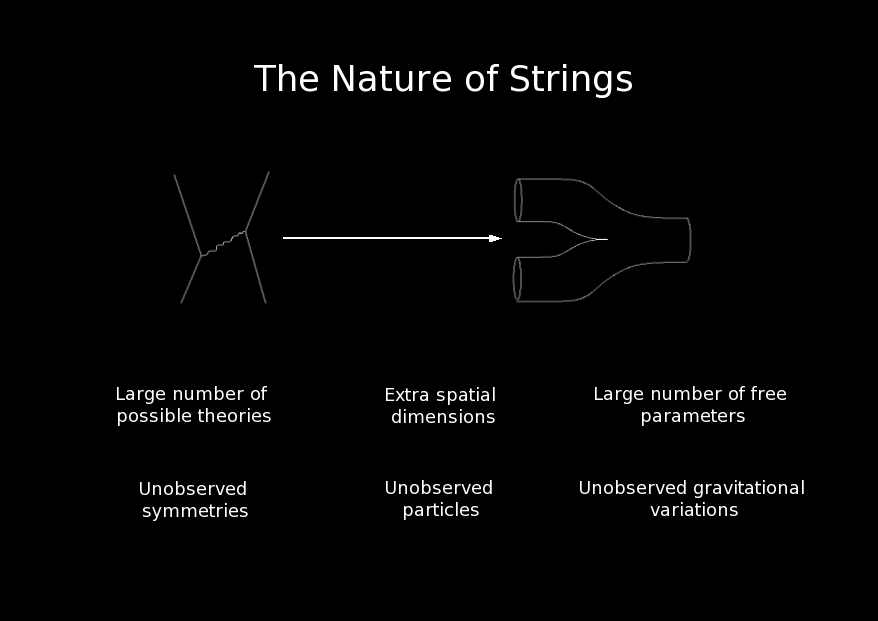










The diagram on the left is the archetypal Feynman diagram that shows two electrons repelling each other by exchanging a virtual photon. The original equations of quantum field theories, such as, in this case, QED, as well as the sets of approximate perturbation equations all assume that the entities involved in physical processes are particles, which are represented as 0-dimensional geometric points. String theories replace all of the 0-dimensional particles in the approximate sets of equations with 1-dimensional strings forming loops. Each different type of particle is represented as a string vibrating in a different mode of vibration. Two strings can join and merge or a single string can split into two. This simplifies and unifies all of the processes represented in Feynman diagrams and in the systems of perturbation equations by replacing processes such as the one depicted on the left with processes such as the one depicted on the right. The diagram on the right represents the merger of two strings or the splitting of a string, depending on which direction the diagram is read. String theories are not built from any new principles. Rather, they are constructed from the perturbation approximations to standard quantum field theories. I've listed some of the features of string theories on the bottom half of the slide.
There are many possible string theories. As I mentioned before, some string theories produce finite values for all physical quantities. These are called "consistent". Other string theories that produce infinite values for some quantities are called "inconsistent". There are consistent string theories for universes with between 1 and 9 spatial dimensions (and, of course, 1 temporal dimension). There are 5 types of consistent string theory in 10-dimensional spacetime and at least hundreds of thousands of types of consistent string theory in a 4-dimensional spacetime like the one we perceive. Most of the theories contain free parameters and do not make unique predictions for the values of physical quantities.
String theories predict symmetries that haven't been observed. The most important of these are supersymmetries that require that fermions, like the electron, have bosonic twins. If this was true for the electron, then the Pauli exclusion principle wouldn't apply to the bosonic electrons and all matter would collapse. So, if supersymmetry holds, then it must have been spontaneously broken so that one of the twins for each particle ended up with a much larger mass than its partner. There is currently no evidence of this.
Since there is an infinite number of vibrational modes for a string, string theories predict that there is an infinite number of particles. Most of these modes correspond to energies that are too high for us to observe. But some modes in some consistent string theories correspond to particles with low enough energies to be observable. None of these exotic particles have ever been seen.
Many consistent string theories include gravity. But many of those that do predict that the strength of the gravitational force varies in space and time. This has not been observed either.
I am the author of the images and text except where otherwise indicated. Please contact me for permission if you wish to use any of my images or text.
Created on Wednesday 03 May 2006 by Mark A. Martin with KPresenter